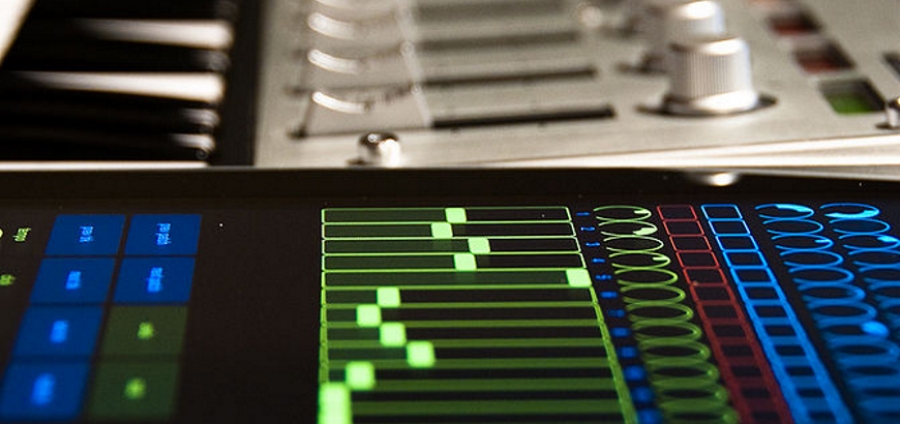The latter is fair caution. Despite the national challenges of school funding, more and more schools appear to be purchasing iPads for use in the classroom. Many are even introducing a one-to-one ration where every child has their own device.
As with any tool, the outcomes are only as good as the planning that you put in. You can teach fantastic lessons with or without an iPad. Unfortunately, you can also teach awful lessons with or without an iPad. This is just as true in Music as it is in other subjects.
Perhaps, however, Music teachers have an advantage. While other subject teachers are more accustomed to books, videos and websites as resources, Music teachers are accustomed to using a much wider gamut of tools - instruments. If we can encourage Music teachers to view the iPad as another instrument and a vehicle by which children can make genuinely music progress, then we are well on the way to making the most of this 21st century resource.
So, how can music teachers deliver real learning with the Apple iPad?
One: The ultimate backing track
Backing tracks are nothing new in the Music classroom. Nor are the challenges that surround them. A fixed tempo, a fixed key and a complete inability to vamp can be a source of many a Music teacher’s headache.
With an iPad, however, that challenge can be more than overcome. A range of apps are available that allow "Music teachers are accustomed to using a wide gamut of tools - instruments."you to change the tempo or key of a backing track. Better still, why not use a sequencer such as Cubasis or GarageBand to create custom backing tracks with looped sections. I particularly like using ChordBot to create chord progressions with fantastic instrument samples in seconds, especially for use in instrumental lessons. Peripatetic staff who have made backing tracks for scale exercises report miracles. Indeed It’s the closest thing you can get to a human accompanist - except for a human accompanist…
Two: Keep on teaching even when you’re not in the room
If you teach lessons that involve sending pupils to practice rooms, then you will know that the biggest challenge is being in many places at once.
The children in Room 2 need you to demonstrate the bass riff one more time but the pupils in Room 3 are ready to learn the next section of the song. Learning stops while you attend to one group before the other.
If each group had an iPad, however, you could be in both rooms at the same time. Video yourself playing all the parts and save them in a location where pupils can access the resources whenever they need to. Suddenly, you’re in every room at once!
Better still, when you do need to intervene and show pupils a simpler or more demanding version of a phrase, then you can get them to video you while you demonstrate. Voila: you’ve instantly created a personalised differentiation resource for your music scheme of work.
Three : Musical self-evaluation beyond WWW and EBI
When professional musicians evaluate themselves, do they sit down with a worksheet and fill in ‘what went well’ and ‘even better if’? Probably not. So, why do we encourage children to do this.
Wouldn’t it be better if we were to encourage them to record their own performances and look for ways to improve… and then actually do something to deliver that improvement? Isn’t that exactly the sort of progress that’s the golden ticket of the modern educational landscape?
With an iPad, you could have a sequenced version of the track and children could compare their part to the pre-recorded one. All it would "GarageBand for iPad is a wonderful composing tool."take would be a few presses of the ‘solo’ and ‘mute’ buttons for them to know exactly where they need to improve and what the end result should sound like. That sounds like a recipe for ‘rapid and sustained pupil progress’ if ever there was one.
Four: Composing collaboratively and alone
The built-in instruments, combined with compatibility for microphones and audio-interfaces, mean that GarageBand for iPad is a wonderful composing tool. Students can compose great rhythmic patterns, chord progressions and melodies using virtual and real instruments. Importantly, they can compose in the genres that are meaningful to them, developing their identity as musicians and maximising engagement.
Better still, they can do all of this while working on their own or with others. The iPad becomes an enabling device rather than one that forces them to work in a specific way. What would your students compose if their limits were taken away?
Musical outcomes
If ‘pupil progress’ is one teaching buzzword, then the other is surely ‘outcomes’. As Music teachers, we’ve always had a wonderfully visible (or should that be audible?) outcome - the music itself. Concerts are a great vehicle for demonstrating the learning that has taken place in your lessons. We can now add ‘published on the class SoundCloud account for Auntie Anne in Australia to listen to’ as another, often even more meaningful, demonstration.
With iPads in the Music classroom, more children than ever can deliver genuinely convincing musical outcomes, connect classroom music with the rest of their sonic world, and share their creative voice with the world. Isn’t that what we want for all our children?
How do you mix edtech and music? Let us know in the comments below.


















